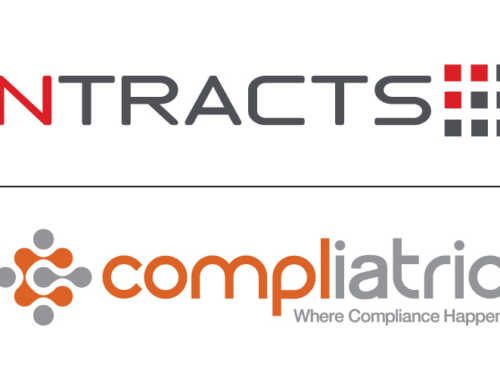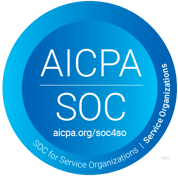Below, watch Stephanie Haywood, Ntracts Senior Vice President of Sales & Client Engagement, and David Paschall, Ntracts CEO, discuss how contract lifecycle management has evolved over the past 20 years.
Contract Lifecycle Management (CLM) is a critical aspect of healthcare organizations, particularly when it comes to protecting the organization against regulatory compliance fines. Behind patient and staff health and safety, facing regulatory compliance fines is one of the biggest concerns healthcare leaders face.
As we discussed in The Evolution of Contract Management and Its Impact on Business Operations (link), a CLM is powerful enough to affect more than administrative compliance tasks in that it has a significant downstream impact across healthcare organizations.
The impact of contract management extends beyond the administrative side of healthcare. By ensuring efficient and effective contract management, healthcare organizations can provide better care to the communities they serve, making a positive impact on the clinical side of healthcare operations.
Bringing New Stakeholders to Contract Management Discussions
When following best practices that are implemented correctly, an organization’s contract lifecycle management process will often start in one area of an organization and as CLM successes are realized, they become adopted by other departments. At Ntracts, we’re starting to see a lot more of the operational side being involved in the CLM platform decision. CEO’s, Leaders in physician services and recruitment, CMO’s and CFO’s, understand the benefit, especially when it comes to everything that surrounds a physician arrangement.
The far-reaching effects of a CLM throughout an organization makes it essential for ancillary stakeholders, such as operational or clinical leaders, to be involved in the process of selecting and implementing a contract lifecycle management solution alongside the organization’s legal and compliance teams.
Culture of Compliance
A decade or so ago, contract management was mostly seen strictly as an way to improve administrative process in a health system . Now, contract lifecycle management has proven to be an integral part of an organization’s compliance strategy, impacting financial and clinical areas. This shift in perception regarding CLM should ultimately become a part of the culture of the organization to make sure that they’re aligned on regulatory and organizational processes.
An organization’s compliance strategy can become a part of its culture by consistently promoting and reinforcing the importance of compliance in several ways such as:
-
Leadership involvement: When the leaders of an organization prioritize compliance, it sets a positive example for others to follow.
- Communication: Regular and clear communication about the organization’s compliance policies, standards and expectations can help embed these values into the culture.
- Employee training: Providing regular training and education on compliance can help raise awareness and understanding of the importance of following regulations and guidelines.
- Incentives: Recognizing and rewarding employees who adhere to compliance standards can incentivize others to do the same.
- Consequences for non-compliance: Having consequences for non-compliance, such as disciplinary action or termination, sends a clear message that compliance is taken seriously and is not negotiable.
By making compliance a part of the day-to-day operations and regularly reinforcing its importance, an organization can create a culture where compliance is not just a policy but a way of life.
Widening Margins and Providing Real Value
In addition to compliance, contract lifecycle management also impacts the efficiency and resource utilization of healthcare organizations. By streamlining and automating processes, organizations can maximize their resources and make the most of their investments. This can also help to improve revenue, which is becoming increasingly important in the healthcare space, where margins are slim.
As reported by Kaufman Hall’s The Current State of Hospital Finances: Fall 2022 Update, “[hospitals and health systems’] margins remain depressed relative to pre-pandemic levels. After a difficult first half of 2022, optimistic projections for the rest of the year indicate margins will be down 37% relative to pre-pandemic levels.”
CLM can also have an impact on the bottom line and hospital margins, as it affects everything from physician recruitment to reimbursement. The faster CLM processes are in place, the more it can affect hospital spend; therefore, it should not simply be viewed as a cost-saving measure, but also as a means of improving the healthcare organization’s bottom line, contract spend, and margins.
This occurs through efficient contract management that can help speed up the provider contracting process by streamlining the contract negotiation and execution process which helps to get the physician on board faster, and will have a positive impact on revenue growth.
CLM Solutions Should Provide Protection and Assurance
One of the biggest things that a chief compliance officer, CFOs, and other executive leaders of healthcare organizations look for in CLM is assurance that they are protected from a regulatory compliance standpoint, and assurance that their processes are working smoothly, alert them when necessary, and are as efficient as possible.
For compliance leaders, having the ability to rely on scheduled reports that push them information including relevant, upcoming critical contract dates and milestones, resource workload, at-a-glance efficiencies, and timelines. The information may even include alerts to direction them to areas that may need more attention. By having all their contract data and information consolidated in one solution , and by implementing automated reports, healthcare compliance leaders can ensure that the organization is meeting regulatory requirements and making the most of its resources.
Quickly and Easily Producing Evidence of Risk Mitigation is Like Having an Insurance Policy
Using your CLM platform to maintain compliance, is like having an insurance policy. Regulatory compliance fines can be crippling, to a health care organization. We see this in the news often, mistakes happen. The best way compliance officers can sleep a little better at night is to have the ability to show and pull up evidence and documentation of risk mitigation.
In addition to putting compliance officers at ease, CFOs and finance executives within the healthcare organization, who are already dealing within narrow margins and will also benefit from knowing that the organization is protected against financial penalties.
As we’ve shown here, a contract lifecycle management solution is an essential aspect of a healthcare organization, impacting much more than the administrative side of the organization. A quality CLM solution, and the processes it brings, plays a critical role in the operational and clinical sides of the organization, ensuring regulatory compliance, protecting the organization against fines, and improving the efficiency of resource utilization.
And with the added benefit of improving an organization’s bottom line, there’s a strong case to be made for contract lifecycle management to be a top priority and key strategy for modern healthcare organizations.
As the role of contract lifecycle management becomes increasingly important, healthcare leaders should ensure that they have the right processes and tools in place to meet their goals.


![[Webinar On-Demand] Compliance Program Effectiveness: From Mystery and Mayhem to Mastery and Metrics](https://www.ntracts.com/wp-content/uploads/2025/01/WOD-Thumbnail-scaled-500x383.jpg)
